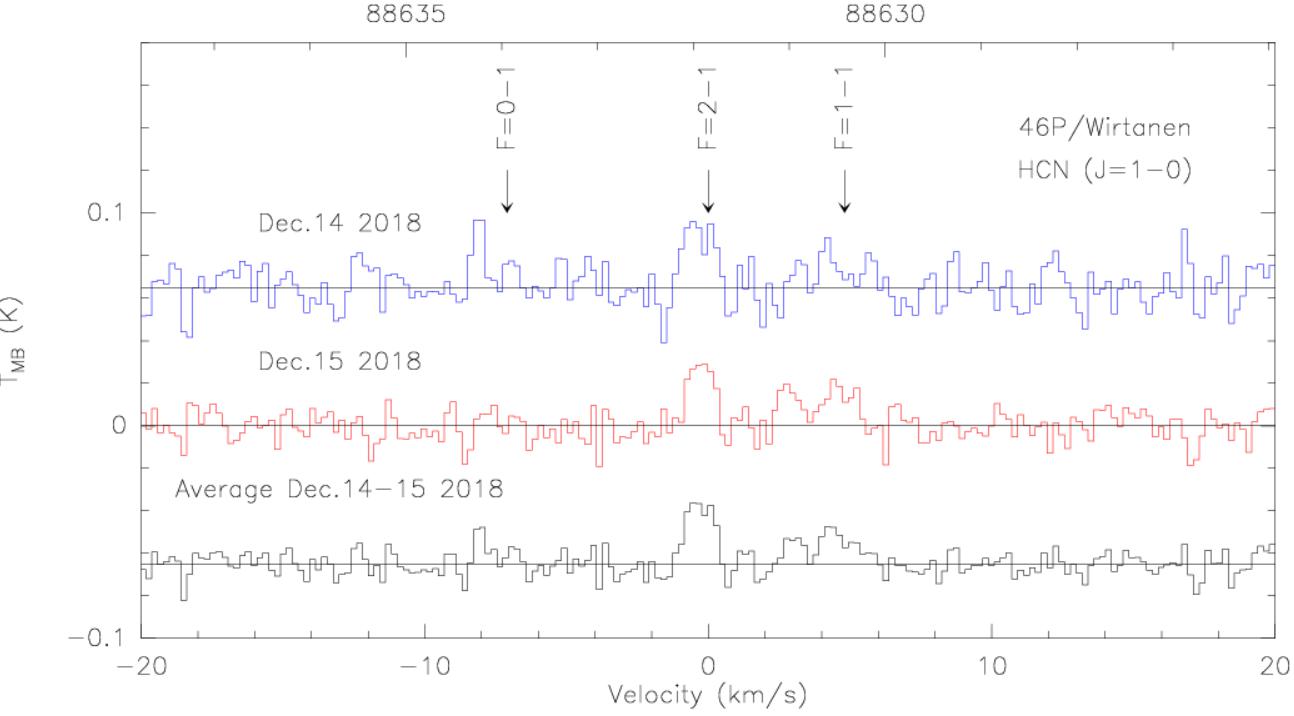A recent research achievement was gained by Dr. WANG Zhen, in the Planetary Science Research Group at XAO, from the detection of the 88631.8473 MHz emission molecule spectral lines in the volatilized gas of Comet 46P/Wirtanen using the 13.7m radio telescope at the Purple Mountain Observatory. The results are published in the Astronomical Journal (2020, AJ, 159, 240).
Containing abundant oldest relics of solar nebula cloud, the comet 46P/Wirtanen in the Jupiter family with an orbital period of 5.5 years was discovered on 1948 January 15. Under the effect of solar ultraviolet radiation, kinematic property of the energy transfers and photochemical processes, the surface frozen substances of the comet are evaporated into gaseous species. The above processes cause the energy to increase, produces heat and inflation of neutral gas, which cause the brightness of the comet to reach 8.8 m. On 14-15 December 2018, we completed a 16-hour observation on this comet with velocity resolution of 0.21 km/s. Moreover, we detected 88631.8473 MHz emission lines, and the associated flux density, expansion velocity and water production rate. The observational data has provided an important basis for studying the oldest relics in the solar system and is significant for understanding the solar system and planetary origin and evolution.
Article Link:https://iopscience.iop.org/article/10.3847/1538-3881/ab8734

Fig.1 HCN molecule of 46P/Wirtanen
Contact: WANG Zhen
Xinjiang Astronomical Observatory, Chinese Academy of Sciences
Email: wangzh@xao.ac.cn